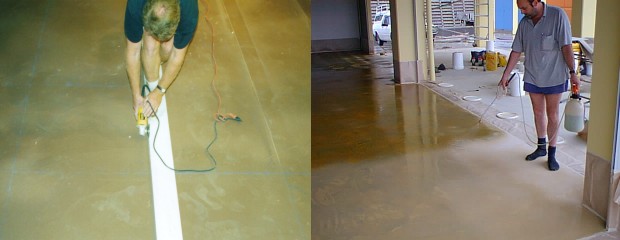Patina Acid Stain
Patina Acid Stain is a penetrating liquid acidic stain that reacts with cured cementitious surfaces to produce weather resistant mottled, variagated and/or translucent colour patterns. This chemical reaction with the cured concrete produces insoluble colour deposits in the concrete pores, giving an aged appearance of time worn structures.
Patina stained surfaces are striking in appearance and add to the artistic features of modern sculptures. Patina stain can be applied to old or new concrete, or if the surface is unsuitable a Perma-Colour self levelling skim coat can be applied before staining.
How is it done?
Step 1
Existing concrete surfaces are cleaned to remove contaminants by mechanical sanding or scrubbing. New skim coated surfaces are merely left to cure.
Step 2
Patina stain is applied by spray or sponge - usually a two coat system. Patterns can be scored or cut into concrete prior to or after staining depending on the desired affect.
Step 3
Once sufficient time has elapsed to allow for the chemical reaction to take place (2-4 hrs) residues are washed away and the surface allowed to dry.
Step 4
A variety of Perma-Colour sealers can then be used to achieve the protective coating - whether it be matt, semi gloss or high gloss in appearance.
Benefits:
Economical, durable, versatile, elegant, easy to maintain
Large cost savings over similar looking traditional flooring systems like marble
Colour is deposited by chemical reaction under the surface and will not fade, chip, crack or peel
The colour pattern produced is unique to each concrete surface and cannot be duplicated
Patina stain transforms an ordinary concrete slab into a luxurious floor, resembling marble or glazed stone. Stained and scored, it creates unique and expensive looking flooring at a fraction of the cost of traditional methods




